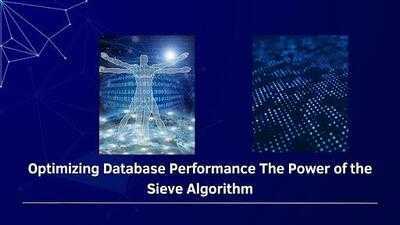

In the evolving landscape of distributed database systems, efficient cache management is a pivotal factor in ensuring optimal performance. Arun Vivek Supramanian, a distinguished researcher in database optimization, presents a compelling case for the an innovative approach to predictive caching that significantly enhances query efficiency. His work delves into the algorithm's ability to surpass traditional caching mechanisms and reshape database performance in distributed environments.
Rethinking Cache Optimization in Distributed Systems
Database caching has long been a cornerstone of performance optimization, reducing reliance on disk-based storage and enhancing response times. Traditional approaches, such as the Least Recently Used (LRU) algorithm, have been effective but struggle with dynamic workloads, leading to suboptimal cache utilization. The Sieve Algorithm introduces a paradigm shift by employing predictive heuristics to intelligently retain high-value data, minimizing unnecessary cache evictions and improving overall efficiency.
How the Sieve Algorithm Outperforms Traditional Methods
The Sieve Algorithm surpasses traditional methods like LRU by incorporating predictive scoring to estimate future data access probabilities. Unlike LRU, which relies solely on recency, Sieve adapts dynamically to workload patterns using statistical techniques and machine learning. This continuous optimization allows it to make more informed caching decisions, leading to higher cache hit rates, faster query responses, and improved system throughput. By intelligently prioritizing data retention, the Sieve Algorithm ensures efficient resource utilization, making it highly effective across diverse workload conditions where conventional caching strategies may fall short.
Predictive Heuristics: The Core of the Sieve Algorithm
At the heart of the Sieve Algorithm is its predictive heuristic system, which assigns a dynamic score to each cache entry. These scores evolve based on data access frequency, query patterns, and contextual workload factors. The algorithm dynamically adjusts its eviction thresholds, ensuring that only the least useful data is discarded. By selectively optimizing cache retention, the Sieve Algorithm offers a more intelligent and adaptive solution compared to traditional static caching methods.
Enhancing Distributed Database Performance
Distributed database systems present unique challenges, including latency, workload variability, and network resource optimization. The Sieve Algorithm addresses these challenges by proactively managing cache entries across multiple nodes. This results in reduced inter-node data transfer, lower query latency, and improved resource utilization. Its ability to predict and cache frequently accessed data ensures that distributed queries execute with minimal delays, making it a vital tool for large-scale database operations.
Experimental Validation and Performance Gains
Extensive experiments confirm the Sieve Algorithm's effectiveness across diverse workloads. Compared to LRU caching, it delivers significantly higher cache hit rates, reducing query response times by up to 35% in analytical workloads and boosting overall system throughput by 30%. Its adaptability to fluctuating workloads makes it highly beneficial in dynamic environments with unpredictable data access patterns. By intelligently prioritizing data retention, the Sieve Algorithm optimizes resource utilization, ensuring faster processing and improved efficiency, making it a superior choice for performance-driven caching solutions.
Future Implications for Database Management Systems
The success of the Sieve Algorithm highlights the growing importance of predictive caching in modern database architectures. Its seamless integration with existing database engines suggests that predictive caching should become a standard feature in distributed systems. By enhancing query performance and optimizing resource allocation, this approach paves the way for more intelligent, self-tuning database systems that can meet the demands of increasingly complex data environments.
In conclusion, Arun Vivek Supramanian's research highlights the transformative impact of predictive caching on distributed database performance. The Sieve Algorithm offers a scalable and efficient solution to modern database challenges by leveraging intelligent cache management strategies. As database technologies evolve, innovations like the Sieve Algorithm will play a crucial role in shaping the future of high-performance computing and data-driven decision-making.